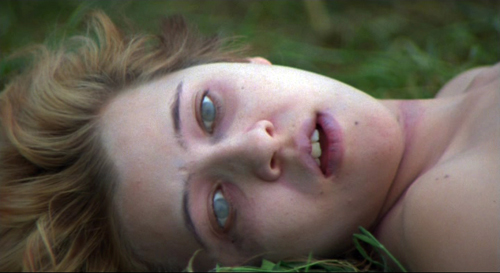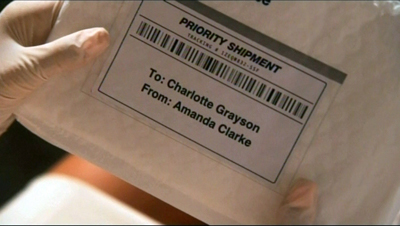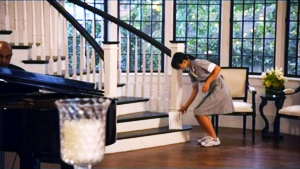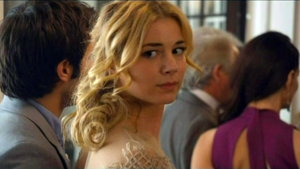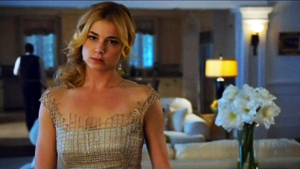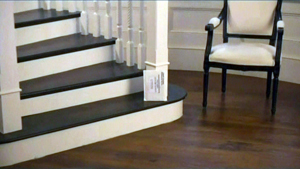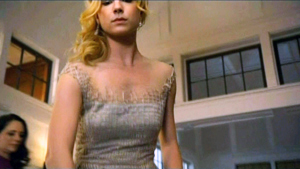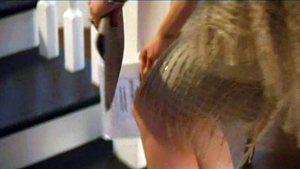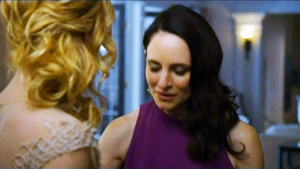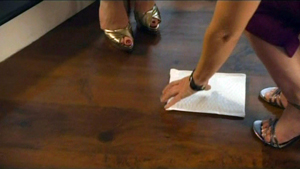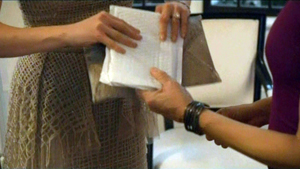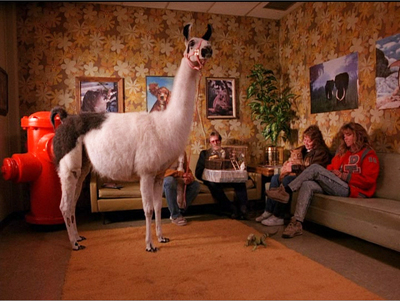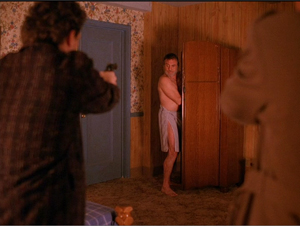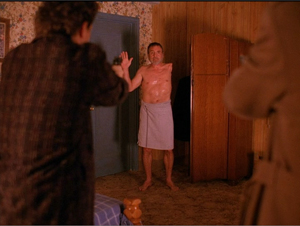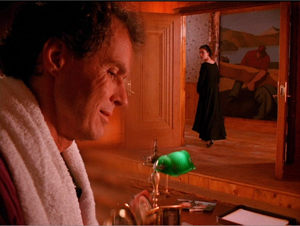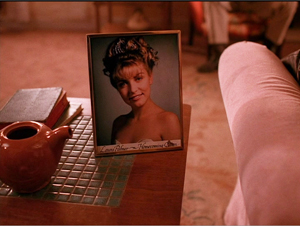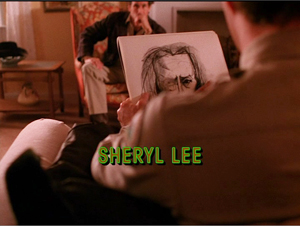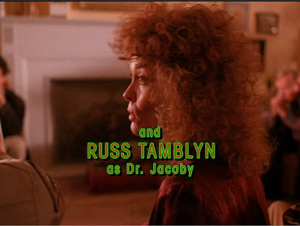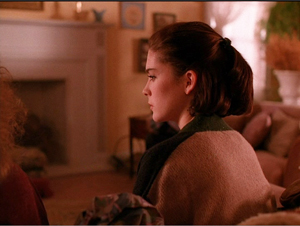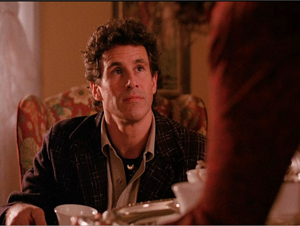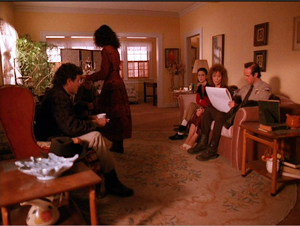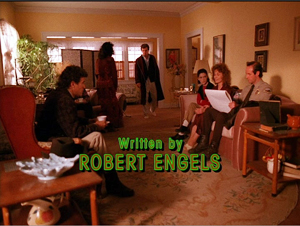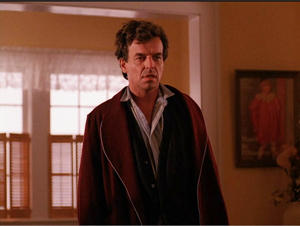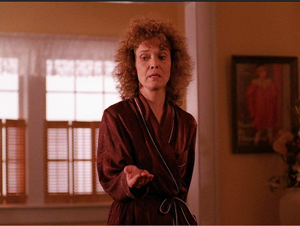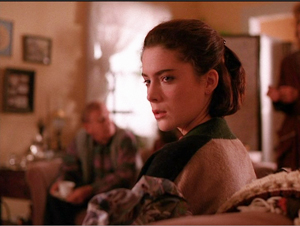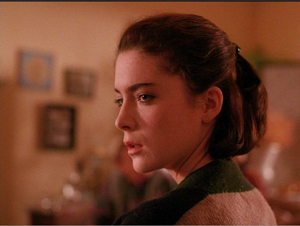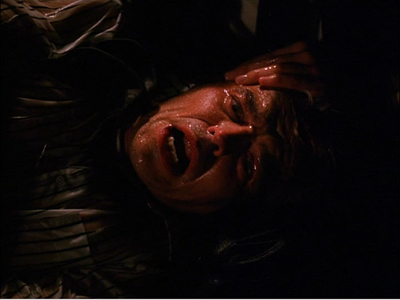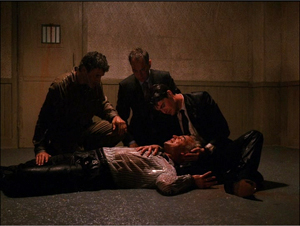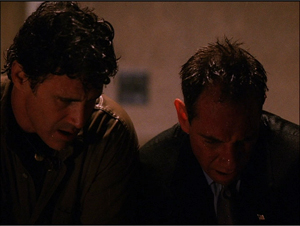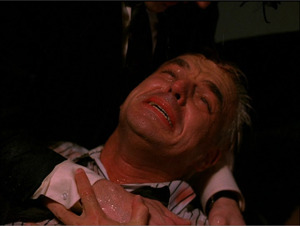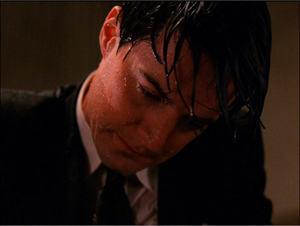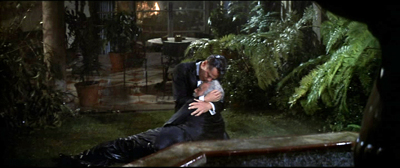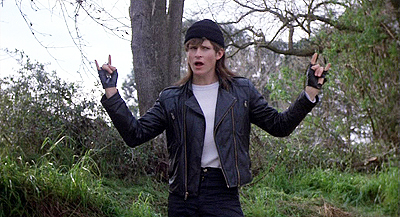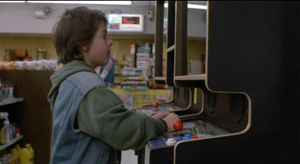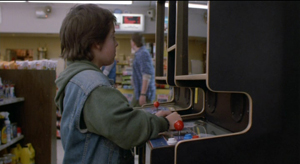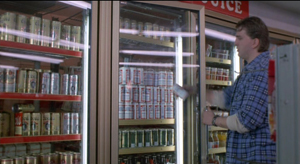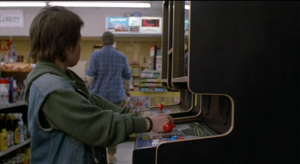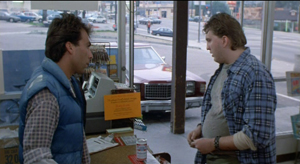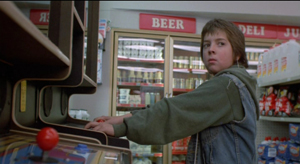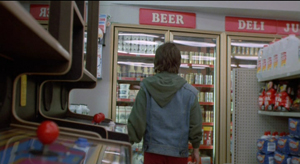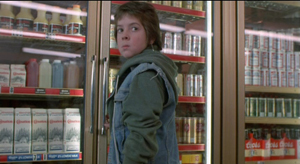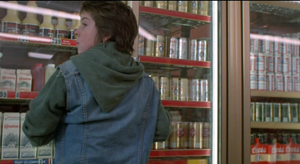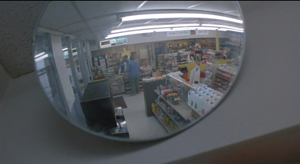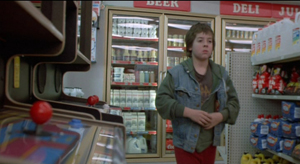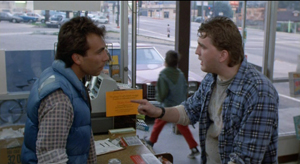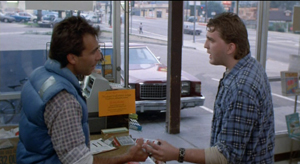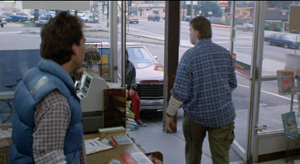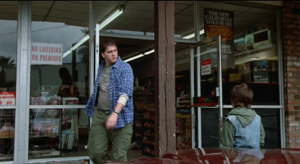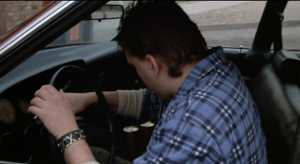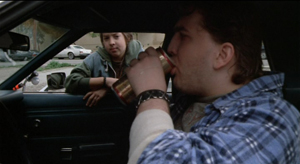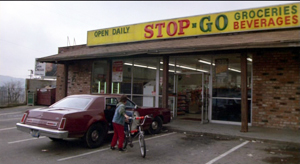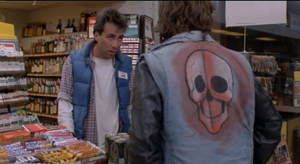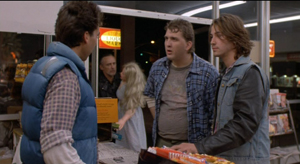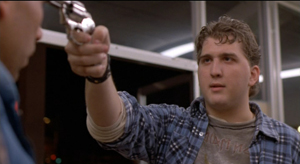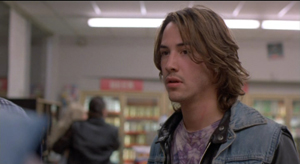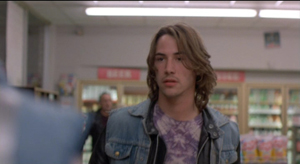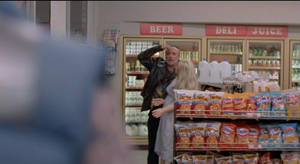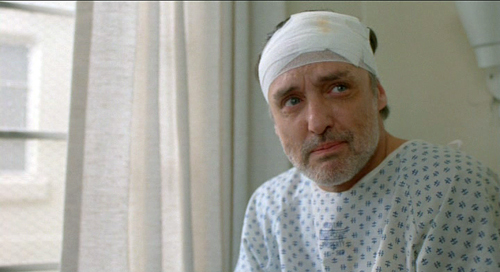Auteurist on the sound stage
Sunday | November 25, 2012 open printable version
open printable version
River’s Edge (1987).
DB here:
Last November, Joe Dante brought his brand of manic legerdemain to Madison. This year, his pal and contemporary Tim Hunter visited. Tim talked with us about directing, watched an abundance of movies (from 1930s Wellman classics to Hong Kong gunfests), and oversaw a screening of his 1987 classic River’s Edge. A genial presence and 110% cinephile, Tim was continually stimulating. A blog was a necessity.
Grinding it out
Hunter has made several theatrical features, most famously River’s Edge and The Saint of Fort Washington (1993), but for many years he has also been a free-lance director for top television series, mostly on premium cable. Unlike Dante, whose forte is grotesque comedy and satire, Hunter brings a strong sense of dramatic realism to both movies and television. Over twenty years and more than sixty episodes, he has directed major installments of Mad Men, Breaking Bad, Dexter, Deadwood, Law & Order, Cold Case, and Homicide: Life on the Streets.
Apart from efficient craft, he brings to these projects a baby-boomer cinephilia. “I’m an old-school movie brat.” Born in 1947 (about a month before me), he grew up watching classic films. His father was a screenwriter, and in his application interview for Harvard, he won entrance, he thinks, with a rapid-fire analysis of Psycho. As an undergraduate, he ran film societies and made student films. He attended the AFI directors program in 1970 and began teaching film studies at UC-Santa Cruz. Meanwhile, he was writing screenplays. Over the Edge (1979), written with Charlie Haas, was sold to Orion and directed by Jonathan Kaplan. Soon Hunter was able to get backing for Tex (1982), his first directed feature.
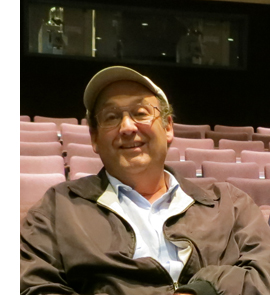 As a classic Sarrisian cinephile, he understands that today’s television production resembles the old studio system—particularly its B-level. When he takes a job, he joins a series with an established look and feel, its own formulas and conventions. He’s given a fifty-page script to prepare in a week and to shoot in seven to eight days, with each day lasting twelve hours. On the set he must get through at least seven pages a day to come up with 42-44 minutes of engrossing drama.
As a classic Sarrisian cinephile, he understands that today’s television production resembles the old studio system—particularly its B-level. When he takes a job, he joins a series with an established look and feel, its own formulas and conventions. He’s given a fifty-page script to prepare in a week and to shoot in seven to eight days, with each day lasting twelve hours. On the set he must get through at least seven pages a day to come up with 42-44 minutes of engrossing drama.
As a result, the key question—where to put the camera?—has to be settled swiftly. “You need an efficient plan.” Hunter likes to walk the set a day or two before production begins, in order to figure out his setups and actor blocking. The big decision is whether to used a fixed camera or a “moving master,” a tracking shot that reveals the players and the setting, but one that can be interrupted by closer views. He argues that performers prefer sustained shots. “The longer you can play it, the better for the actors.”
To sustain the shots, most dialogue scenes are covered by at least two cameras. That way the scene can be played out in something like real time, with each camera yielding a continuous take centered on one actor or another. The two camera takes can then be cut together into shot/ reverse-shot patterns.
You can see the efficiency of this. The “Perception” episode of Revenge (2012) contains about 780 shots in 42 minutes; of these, at least 350 are shots that repeat setups. A similar proportion can be seen in Hunter’s first episode of Twin Peaks from 1990; about half of the shots repeat earlier camera setups. Because of the time pressure, the director must stage the scenes with adequate coverage from two or more angles.
This can lead to a routine, zero-degree style: Little complex staging, more reliance on actors sitting or standing. Shoot master shot, reverse angles, and singles for reaction shots. Why not use long-held two-shots or fuller framings, as we find in classical Hollywood studio films? Breaking up the camera takes permits the editor to control when we see facial reactions, to tighten the rhythm, and to eliminate fluffed lines. Quick intercutting also supplies that pepped-up pace that, TV practitioners believe, keep viewers glued to the screen.
Hunter looks for ways to inject something different, often based on his tastes in classical cinema. For instance, he admires the melodramas of Minnelli and Sirk, so you aren’t surprised to see sudden high or low angles in moments of confrontation. In the “Perception” episode of Revenge, the script gave him a chance for “a Marnie moment.” The heroine Emily has prepared a video that reveals the wealthy Charlotte Grayson’s real parentage. She’s gratified when she sees the maid set the envelope at the foot of the staircase for Charlotte to notice.
Later, overhearing an emotional scene between Charlotte and her father, Emily repents her scheme and tries to retrieve the envelope before Charlotte can find it. Hunter points out that the scene gained suspense when he broke it up into “inserts and moving point-of-view shots.”
The result is a somewhat Hitchcockian byplay, as Emily, startled by the vengeful matriarch Victoria, drops the envelope and tries to keep her from identifying it.
Neatly, Victoria’s face slips into the low-angle view at the very end of the shot, preparing us for her sudden entrance when Emily turns around. And the envelope falling addressee-side down sustains the suspense.
Consciously arty
However much you inject your own emphases, Hunter explained, the director has to assess the visual style of each show and maintain it, so you “tailor your style to the show.” Homicide was 100% handheld, and for that you need a cinematographer who is master of that look. By contrast, Mad Men is more “pictorially precise” and harks back to the studio movies of the 1950s. (Jim Emerson has painstakingly analyzed the felicities of the Mad Men look in several blog entries and video essays.)
Another pictorially precise show was Twin Peaks, and Hunter’s contribution to the first season (episode four) was one of the most memorable. In that episode we meet Killer Bob’s intimate friend who’s introduced in a shot at once chilling and funny. “Keep your hands where I can see ’em,” snaps Sheriff Harry Truman, and we get this.
At other moments, in an echo of 1940s deep-focus, Hunter uses split-focus diopters to keep foreground and background plane crisp.
The opening displays the sort of calm assurance that Hunter could bring to a show that was, as he put it, “consciously arty.” A moving master takes us from a photo of the dead Laura to Deputy Andy sketching Killer Bob to Sarah Palmer giving her description; it ends on a framing of Donna, taking it all in uneasily. Donna won’t move or say anything in the scene, but this shot’s ending prepares for both the final shot and her expanding role in the episode’s plot.
In the course of the scene, Hunter supplies closer views anchored by a fixed master setup of the parlor.
When Leland Palmer comes in to say that his wife has had another vision, and when Sarah rises to describe it, we get a long-lens framing, presumably from the B camera aligned with the camera that supplied the master framing.
Sarah’s last gesture in the shot involves extending her palm and recounting her vision of a hand taking out a necklace from under a rock. This strikes Donna with particular force, because she and James have hidden Laura’s necklace the night before. The scene ends with a cut from Sarah to a framing of Donna like that at the end of the first shot. We track in on Donna as she turns away, and the scene ends.
Hunter has talked about getting ideas for this episode from watching Preminger’s Fallen Angel, which handles action in rather confined sets. The wild wall that puts Hunter’s camera behind the sofa allows him to emphasize the proximity of all the characters. Moreover, in this final framing, we can see one virtue of staging the scene for both the static establishing shot and the moving master. In the final moments, Sarah’s gesture can be seen, out of focus, behind Donna and on the frame edge. The surface action of the scene—Truman’s investigation, Sarah’s visions—is counterweighted by the covert action, Donna’s determination to solve the mystery herself.
Stylistic Peaks
Talking with a class in media production, Hunter remarked that story premises—the arresting or puzzling first few scenes—are fairly easy to invent. “Endings are hard.” He stressed that a good story needs a strong climax and resolution. Novels and short stories tolerate diminuendos and offhand closings, but movies need gripping wrapups. Adapting a piece of fiction, Hunter pointed out, may require you to “amp up dramatic tension for a climax.”
As he spoke, I thought about another of his contributions to Twin Peaks, the crucial episode (number 16) in which Leland Palmer, inhabited by Killer Bob, is seized and flung into a holding cell. There Bob-in-Leland rages, seethes, chatters, and laughs demonically. But once Bob abandons him, Leland collapses in agony as he confronts the fact that he has killed his daughter. As if this weren’t dramatic enough, it takes place during a deluge from the building’s fire sprinklers, set off by a cigarette in another room.
Hunter’s direction shows how stark imagery can enhance the actors’ performances. A kind of cleansing spray pours down on Palmer as he confesses, sobbing. Agent Cooper, the Dream Detective, holds him as if cradling a child. There are only four primary setups over about four minutes.
Instead of cutting quickly, Hunter lets the shots play out to emphasize the dialogue and especially the performances: Ray Wise as Leland, terrified that he may be damned, and Kyle MacLachlan as Cooper, whose daffy mysticism finds its reason for being as he guides the dying murderer “toward the light” and a reunion with his dead Laura (top of this section). The scene’s intensity is shaded by the perverse erotic overtones of Leland/Bob’s unholy passion for young girls and the moment when Leland, recalling being seduced by Bob, moans, “He came inside me.”
Minnelli, who set the climax of Some Came Running in a luminous carnival and in The Four Horsemen of the Apocalypse gave us the image of a man gripping his father in a soaking thunderstorm (above), might well have admired Hunter’s handling. It’s at once tactful (letting the actors act) and flamboyant (the shadows, the torrent of water). In Hunter’s hands Twin Peaks’ New Age quirkiness is cast off and the climax plunges us into pure, traumatic melodrama.
Meaning in the madness
Hunter shot River’s Edge in thirty days at a cost of $1.7 million. Built around Crispin Glover (suddenly hot after Back to the Future) and featuring the young Keanu Reeves and Ione Skye Leitch, it had early buzz. But it alienated the industry. Variety‘s 1986 Montreal festival review called it “an unusually downbeat and depressing youth pic.” By odd coincidence, that review ran alongside a review of Blue Velvet (“a must for buffs and seekers of the latest hot thing”), and both films were shot by Frederick Elmes.
“None of my features made any money,” Hunter says today. But River’s Edge has become a classic of 1980s independent cinema, an anti-John-Hughes teenpic and a sobering look at how kids really live.
Its unglamorized treatment of high-school sex and drugs goes along with a bleak but nonjudgmental account of a moral blank at the center of kids’ lives. A young man has strangled his girlfriend Jamie, and he takes his pals out to see the body, twice. At first none of them reports the crime, and one, the perpetually hyper Layne, urges everyone to keep quiet. Two in the posse have qualms. Clarissa considers calling the police, and Matt in fact does. In the course of a day, a night, and the following day–a sort of grunge-and-amphetamine American Graffiti time frame—the kids circulate through their neighborhoods settling scores and responding to the threat of an investigation. The one adult in sync with the kids is Feck, a former biker and now drug dealer, who claims to have killed a woman years before.
At first glance the film looks wholly moralizing, with a 60s-era teacher trying to stir his class to political consciousness and a hardened cop squeezing Matt to admit something, anything about the crime. The stoned indifference of the kids to the murder of one of their friends–they don’t cry at her funeral–would seem to indict them as hopeless. But the adults driven to exasperation are hardly role models. The teacher is self-righteous, the cop bullying. Matt’s mother and her live-in boyfriend seem as concerned for their own lives, and their cache of weed, as they are for the kids. And the future? Tim, Matt’s little brother, is the first to spot the body but shrugs it off, and he wantonly drowns his sister’s doll. Eventually Tim will try to kill Matt.
Again, Feck sort of understands. His own drug-driven mania enables him to identify with the kids to whom he gives pot for free. But even he is startled by the hollowness of their lives. He confesses a despairing love for the woman he killed, but he sees no depth in the boy Samson, who strangled Jamie “because she was talking shit.” Feck’s madness is born of passion, Samson’s of annoyance and indifference (“She was all right”). Most of the men treat women, whom Layne calls “evil,” as disposable, and the motif of the dead girl–Jamie, the sister’s doll, and Feck’s inflatable sex doll–brings out the parallels between three generations. This is as bleak a vision of American life as we’ve had in contemporary cinema, and the kids’ amorality, festering in an old foothill community, can’t even be blamed on suburbia.
My friend JJ Murphy has written a superb analysis of River’s Edge, with attention to the craft of Neal Jimenez’s script. Here I want just to show how Hunter, working with more elbow room than in the TV projects, enriches his plot with a tightly shaped, classical style. Two scenes–not climaxes–will help me.
Matt’s brother Tim is playing a video game in the Stop-Go, and the clerk is dimly visible at the counter behind him. Then Samson enters in the background. This concise framing is the scene’s establishing shot, introducing all three of the scene’s characters.
One maxim of filmmaking is: Who is the scene’s anchoring character? Through whose awareness is the viewer experiencing the action? Here, it’s Tim. As Samson goes to the cooler and snaps out a can of beer, Tim watches as he lumbers down the aisle to the front counter.
Samson confronts the clerk, who asks for his identification. He refuses to give it and a quarrel starts, observed by Tim.
Now Hunter uses another classical technique. Like Hitchcock, he gives us something to listen to and something different to watch. As the quarrel at the counter grows more heated offscreen, we see Tim slip to the cooler and swipe two beers.
Actually, Hunter doesn’t show us a close-up of the beers, as we might expect. We see only Tim fumbling and his coat getting baggier. But we know he’s stealing, partly because he checks the security mirror.
Tim makes his way to the front of the store and steps out while the quarrel continues. This introduces a level of suspense, while also characterizing Tim as already a practiced shoplifter.
After a tug-of-war over the beer can, Samson angrily relents and makes his way out. In the parking lot Tim disappears and then reappears, perched on the hood of Samson’s car. The initial front-counter framing has “primed” Samson’s car as an innocuous part of the background in the earlier shot, so that it can be used now. Deep-space staging allows you to quietly set up elements to be activated later in the scene.
Samson leaves the shop scowling and goes to the driver’s seat, where he bends down as if seeing something.
Tidiness: Now we know that Tim’s momentary absence took place because he slipped the beers into Samson’s car. Hunter could have cut in a close view of two beer cans left on the seat, but instead he sustains the shot and lets us see Samson bring one into view, open it, and take a big swig. The beer swiping becomes no big deal, nothing out of the ordinary (as a close-up would have hinted). This sort of swift, small-scale flow of information keeps us waiting for more developments. Those come when Tim peers into the window and says, “Don’t mention it.” He adds, “I saw you this morning.” Samson: “Yeah?” Pause. Tim: “Got any dope?”
The whole scene establishes the tribal amorality and cohesion of the young crew. Tim takes the murder in stride. He swipes the beer not just to do a good turn to his brother’s friend but also in hope of scoring weed.
Samson is at first unresponsive but then, as if to acknowledge he owes the kid, tells him to get in. Tim loads his bike into the back seat. They will go see Feck.
This is the first time we’ve seen the exterior of the Stop-Go. Another film would have given us the conventional establishing gesture, a shot of the front, sign and all, as John pulled up. But in the interests of economy and forging an attachment to Tim, I think, the film starts the scene inside and gives us the exterior only when we need to see it, along with the physical action of loading the bike. Later, we’ll see the Stop-Go from comparable angles and we’ll be able to reorient ourselves.
The use of depth, the careful timing of character movements through the frame, and the overall economy of the sequence stand in contrast to the more heavily cut string of singles we get in “Perception” and even in the Twin Peaks episodes. Comparatively few setups are repeated. There’s no standard shot/ reverse-shot, and no over-the-shoulders. (Imagine how a conventional TV director would have cut up the confrontation with the clerk.) Hunter has constructed his eleven shots so that each one presents a compact body of information, and the shots interlock neatly.
The same conciseness and flexible use of depth can be seen when we return to the Stop-Go during the night scenes. Again, there’s no exterior establishing shot. Matt has come to buy beer at the shop, and there Samson and Feck find him. Hunter could have used the earlier counter setup to save time in shooting, but he recalibrates. A judicious over-the-shoulder framing kicks off this four-shot scene.
Matt is trying to buy a six-pack after hours, and the same blue-vested clerk forbids him. A reverse angle shows Samson coming in, followed by Feck with his sex doll Ellie.
After telling Matt to take the beer, Samson pulls Feck’s revolver. Matt is stunned. In the background, out of focus, Feck is making his way to the cooler.
At Samson’s insistence, Matt grabs the beer (and pays for it). As he edges out of the shot, rack focus to Feck turning to ask the clerk: “Do you have Bud in bottles?” End of scene.
Same setting as the first scene above, and something like the same trigger for conflict: the kids want beer, against the rules. And we have the same geography/ geometry, with the scene organized around the beer cooler, the counter, and the aisle between them. But Hunter has activated the space in a significantly different way. With a close shot he stresses Samson at the moment when he pulls the revolver, and he pays the scene off on a semi-comic note that doesn’t underplay Samson’s casual sociopathy.
The long lenses, the marked rack-focus, and other techniques are more characteristic of post-1960 filmmaking than of the studio years. But the demand for concise visual storytelling, layered with echoes of earlier character gestures, recasting previous dialogues and conflicts through new angles and cutting patterns–these are time-honored strategies. Hunter, like many another movie brat, learned the lessons of classical Hollywood moviemaking. Even in scenes of fairly low dramatic pressure like these, he shows the flexibility and richness of that tradition when it’s put to new uses.
Thanks to Tim Hunter for coming to Madison, Jim Healy for arranging the visit, Eric Hoyt for letting me sit in on his class, and Roch Gersbach for all his assistance.
The Mad Men mystique is engagingly chronicled in Matt Zoller Seitz’s columns in New York Magazine.
The best accounts of television aesthetics are those by Jeremy Butler: Television Style (Routledge, 2010) and Television: Critical Methods and Applications (4th ed., Routledge, 2012).
The review of River’s Edge can be found in Variety (3 Sept. 1986), p. 16. For a little anticipatory buzz, see “Sanford-Pillsbury Readying Pic on Teen Murder for Fall Release,” Variety (2 July 1986), p. 27. Roger Ebert’s review captures the wider response to the film at the time, adding: “This is the best analytical film about a crime since The Onion Field and In Cold Blood.”
Why don’t I write about television more often? The answer is here. For more on how post-1960 directors continued the classic studio tradition, see The Way Hollywood Tells It.
Dennis Hopper as Feck in River’s Edge.












